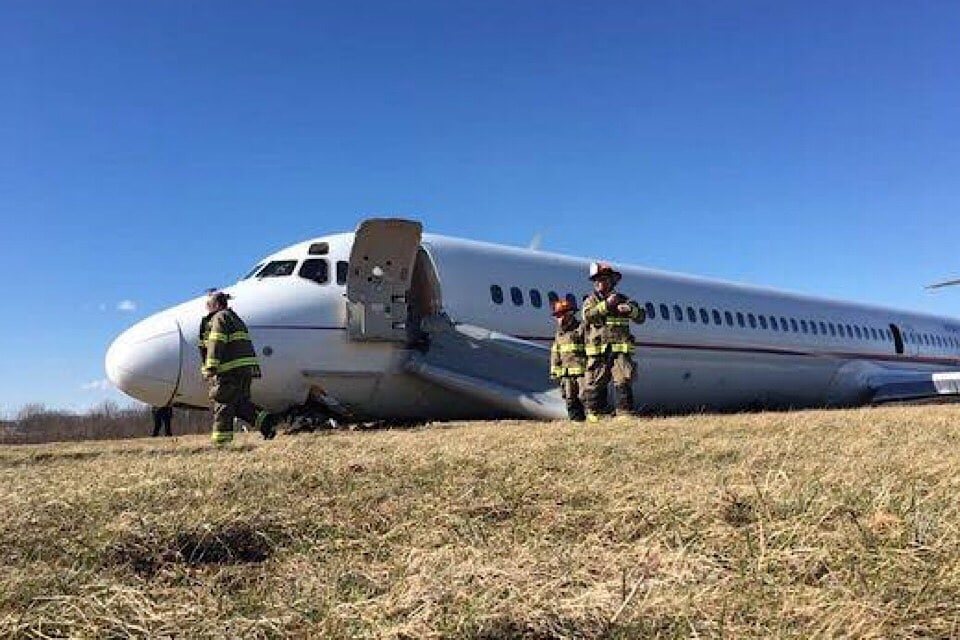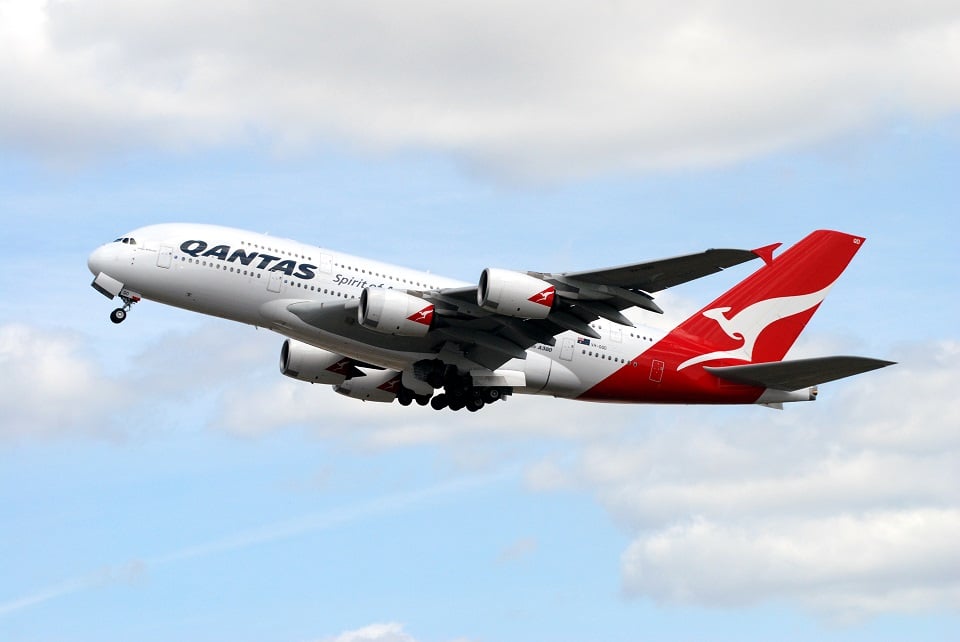Aviation
Undetectable Flight Control Malfunction Cause of Jetliner Runway Excursion; Flight Crew’s Actions Praised

WASHINGTON (March 7, 2019) — An MD-83 airplane ran off the end of the runway during a rejected takeoff March 8, 2017, because of an undetected mechanical malfunction, the National Transportation Safety Board said in a report released Thursday.
Seconds after reaching the takeoff decision airspeed of 158 mph at about 5,000 feet down a 7,500-foot runway in Ypsilanti, Michigan, the captain’s attempt to raise the nose and get the plane airborne was unsuccessful and he called “abort.” The airplane decelerated following the rejected takeoff but was traveling too fast to be stopped on the remaining runway. It departed the end of the runway at about 115 mph, traveled 950 feet across a runway safety area, struck an airport fence and came to a rest after crossing a paved road.
Investigators determined that a component of the elevator flight control system had jammed in the days before the accident flight while the aircraft was parked at Ypsilanti Airport during a wind storm with recorded gusts in excess of 60 mph. Although the flight control system was designed and certified to withstand such horizontal gusts, computer simulation of the wind flow showed that a nearby hangar generated localized turbulence with a vertical component that could move the elevator rapidly up and down, ultimately causing it to jam.

This figure is a vertical cross-section visualization of wind simulation results showing flow pattern and horizontal “U” and vertical “W” wind magnitudes near the accident airplane’s elevators. NTSB graphic.)
The flight crew completed all preflight checks, including a test of the flight controls, and found no anomalies before initiating the takeoff roll on the accident flight. The NTSB said that there was no way that the pilots could have detected the flight control jam until it was too late.
“This is the kind of extreme scenario that most pilots never encounter – discovering that their plane won’t fly only after they know they won’t be able to stop it on the available runway,” said NTSB Chairman Robert L. Sumwalt. “These two pilots did everything right after things started to go very wrong.”
Investigators said that the captain’s quick decision to abort the takeoff and the other crewmember’s coordinated efforts to assist him had likely contributed to the survivability of an accident in which there were no serious injuries among the 110 passengers and six crewmembers. The Ameristar Charters Boeing MD-83, which was transporting the University of Michigan basketball team to Washington, D.C., was substantially damaged.
The NTSB also noted that the 1,000-foot runway safety area – added to Ypsilanti airport during upgrades between 2006 and 2009 – likely contributed to the lack of serious injuries. In 1999, in response to an NTSB recommendation, the Federal Aviation Administration began a national program to add runway safety areas to many commercial airports.
“The addition of runway safety areas at many airports are a real success story in commercial aviation, as demonstrated in Ypsilanti” said Sumwalt. “RSAs across the nation have mitigated accidents, prevented injuries and saved lives.”

Aviation
Lost Tool Found in Qantas A380 After 34 Flights

An Australian Transportation Safety Bureau (ATSB) investigation recently revealed that a Qantas A380 operated 34 flights with a 1.25-meter nylon tool lodged in one of its engines.
This turning tool, used during borescope inspections to rotate the intermediate-pressure compressor, was left behind during scheduled maintenance at Los Angeles on December 6, 2023. It remained inside the engine until it was discovered by maintenance staff during a subsequent check at Los Angeles on January 1, 2024.
China Takes the Lead in Sixth-Generation Fighters with White Emperor B
The ATSB report highlights two critical lapses. First, maintenance engineers failed to notice the tool during final checks for foreign objects after the borescope inspection. Second, the lost tool procedure was not activated when the tool was identified as missing.
The certifying engineer ultimately cleared the aircraft for service without accounting for the misplaced tool. During the time qantas films the tool was inside, the A380 completed 34 flight cycles, accumulating nearly 294 hours without any noticeable effect on engine performance.
Although the tool was deformed by high-energy airflow within the engine, there was no reported damage to the engine itself. ATSB Chief Commissioner Angus Mitchell commented.
India’s C-295 to Gain Advanced Weapons for Maritime Surveillance
“This incident underscores the importance of following established maintenance protocols. Engineers missed the tool during foreign object checks, and the required lost tool procedure wasn’t started after realizing the tool was missing.”
Following the investigation, the airline issued a safety directive, urging all engineering and tool storage teams to adhere strictly to these protocols to prevent similar incidents in the future.
A qantas spokesperson stated, “While the tool didn’t impact engine performance, we take this incident very seriously. It is critical to follow the correct lost tool procedures.”
-

 Aviation2 months ago
Aviation2 months agoBoeing confirms 797: A New Era for Mid-Size Aircraft
-

 Aviation2 months ago
Aviation2 months agoMicrosoft Flight Simulator Raises $3 Million to Bring Back the An-225 Mriya
-

 Aviation2 months ago
Aviation2 months agoLockheed and Tata Team Up to Build C-130J MRO Facility in India
-

 Airlines2 months ago
Airlines2 months agoQantas Engineers Stage Walkout Over Cost of Living Concerns
-

 Airlines2 months ago
Airlines2 months agoQatar Citizens Can Travel to the United States Without a Visa
-

 Aviation2 months ago
Aviation2 months agoBoeing Offers 25% Pay Increase & Promise to Build Next Plane in Seattle
-

 Aviation2 months ago
Aviation2 months agoQatar Airways bans these new Electronic Devices on plane
-

 Airlines2 months ago
Airlines2 months agoEmirates Ends 28-Year Singapore-Melbourne Fifth Freedom Route








